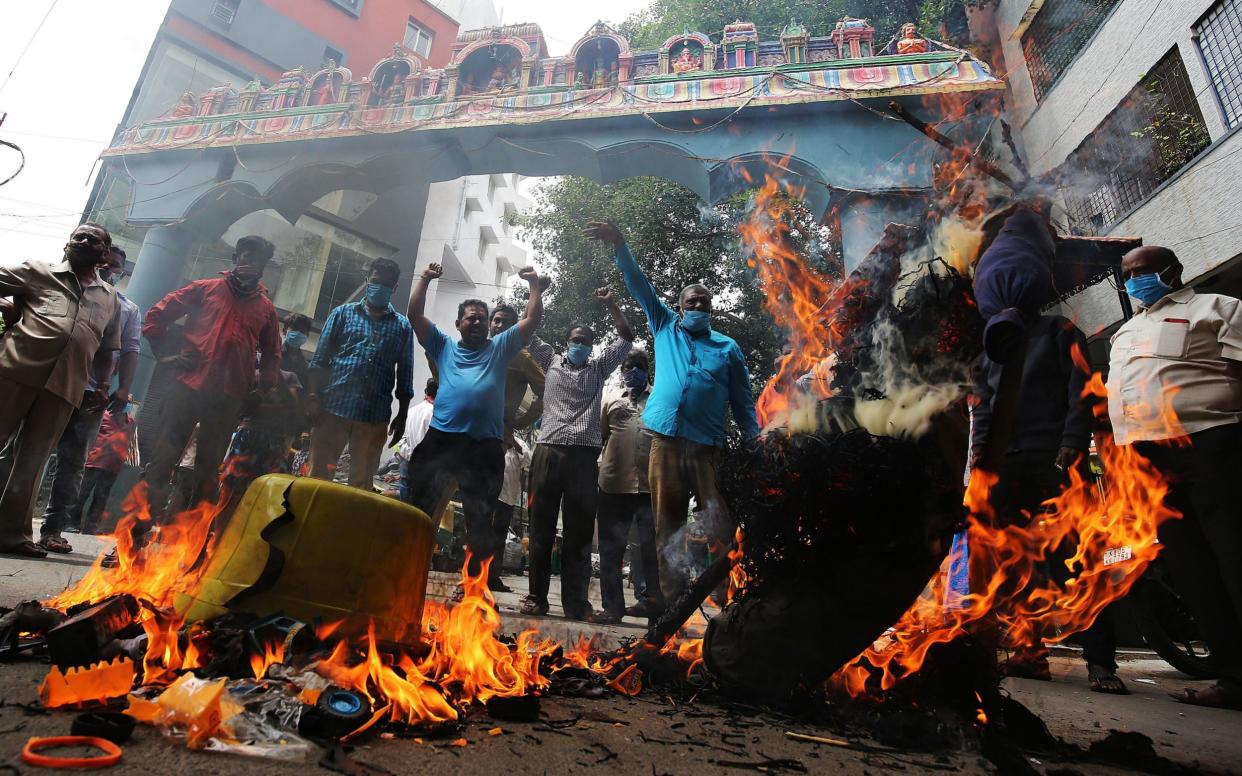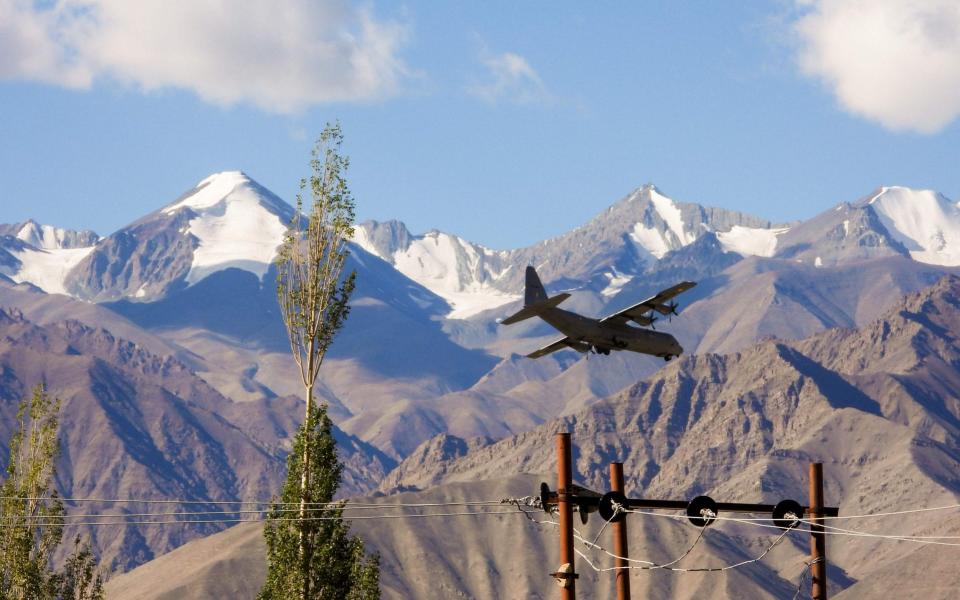Exclusive: China seizes more territory from Nepal with troops constructing buildings over the border

China has annexed more than 150 hectares of Nepal, politicians from the tiny Himalayan nation have told the Telegraph, months after deadly border clashes between Chinese and Indian troops.
China allegedly began seizing Nepalese land in five frontier districts in May, sending members of its People’s Liberation Army (PLA) across undefended areas of the border.
In the north-western district of Humla, PLA troops crossed the border into the Limi Valley and Hilsa, moving stone pillars which had previously demarcated the boundary further into Nepalese territory before constructing alleged military bases. The Daily Telegraph has seen images of the bases.
PLA soldiers also allegedly moved border pillars further into Nepalese territory in the district of Gorkha.
Further annexations occurred in the Rasuwa, Sindhupalchowk and Sankuwasabha districts, after Chinese engineers in the Tibet Autonomous Region diverted the flow of rivers acting as a natural boundary and claimed the previously submerged Nepalese territory.
“Why should China come over into Nepal, when China is already sixty times the size of our small country?" said Jeevan Bahadur Shahi, a lawmaker in the Nepali Congress Party.
Neither Kathmandu nor Beijing responded to requests for comment, with Nepalese politicians accusing their government of staying silent for fear of angering their most important trading partner and regional ally.
China has pursued a more aggressive foreign policy under President Xi Jinping, whose signature Belt and Road project aims to construct trade and transport links from the country across Asia and into Europe.
But alongside the infrastructure deals Beijing has been accused of muscling in on neighbours' territory. In June Chinese troops seized at least 60 square kilometres of Indian territory in Ladakh. The clashes that followed saw 20 Indian troops die of reported clubbing and rock-throwing.
The alleged land-grabs in Humla appear to have been motivated by the strategic view the district’s mountain peaks offer over the Himalayas, according to Nepalese politicians.
In 2009, Chinese troops first crossed over into the undefended district and constructed a veterinary centre for livestock. When Mr Shahi objected, he was told by the Nepalese government the building would have a positive impact on the livelihoods of impoverished local residents who typically make a living by herding yak and goats.
He says he received telephone calls from local villagers in June, reporting stone pillars marking the undefended border had been moved further inside Nepalese territory in the Limi Valley by Chinese troops.
Around 30 hectares of Nepalese territory has been seized in the Limi Valley during this recent incursion, with Chinese troops constructing an additional nine buildings, including military bases, according to Mr Shahi. He says China annexed more land in the Humla district in June, in Hilsa, taking the total allegedly seized in these districts to 70 hectares.
“The local people are very scared, particularly because they previously depended on Chinese traders to buy commodities like rice, bread and salt,” explains Mr Shahi.
“They are worried that if they raise their voices on the issue then it will disturb everything for them.”
In the first week of May, the 72 households of the remote mountainous village of Rui awoke to find the border pillar that separated them from China had been moved overnight, meaning they had been incorporated into the Tibet Autonomous Region, according to Rakesh Kumar Mishra, a committee member of the opposition Janta Samajh Party. Mr Mishra says around 60 hectares of land were annexed.
Mr Mishra and Mr Shahi both accuse the Nepalese government of inaction.
In June, a report published by the Nepalese Surveying and Mapping Department which claimed China had purposefully altered the course of rivers acting as a natural border with Nepal to claim 33 hectares of land was quickly dismissed by Nepalese government sources.

Nepal is currently ruled by the Nepal Communist Party (NCP), which sees the Communist Party of China (CCP), as an ideological brother.
China also contributes the majority of vital foreign direct investment into Nepal, which is one of Asia’s poorest nations.
Historically, Kathmandu had maintained close ties with India but its relationship soured when New Delhi imposed a sudden blockade on Nepal in 2015, making it all but reliant on Beijing.
This dependence has only deepened during the Covid-19 pandemic as Nepal’s economy, which previously relied on remittances for over one-quarter of its GDP, has nosedived.
Both Mr Shahi and Mr Mishra fear the annexations of Nepalese land are just the beginning of heightened Chinese aggression along the border and say there will be no opposition unless the Nepalese Government takes a firmer stance against Beijing.
Mr Shahi attempted to lead a fact-finding mission to the Limi Valley earlier this month but said his officials were tear gassed by PLA soldiers and pelted with stones.
Mr Mishra has not returned to the village of Rui recently. In August, the body of a Nepalese journalist, Balaram Baniya, who was investigating Chinese annexations in the area was found floating in the nearby Bagmati River.
“The people of Nepal need other countries to help them and protect its territory, since it is such a small, landlocked country,” said Mr Mishra.
The Daily Telegraph contacted the Nepalese Home Ministry and the Chinese Embassy in Kathmandu for comment but neither responded.

 Yahoo News
Yahoo News 
